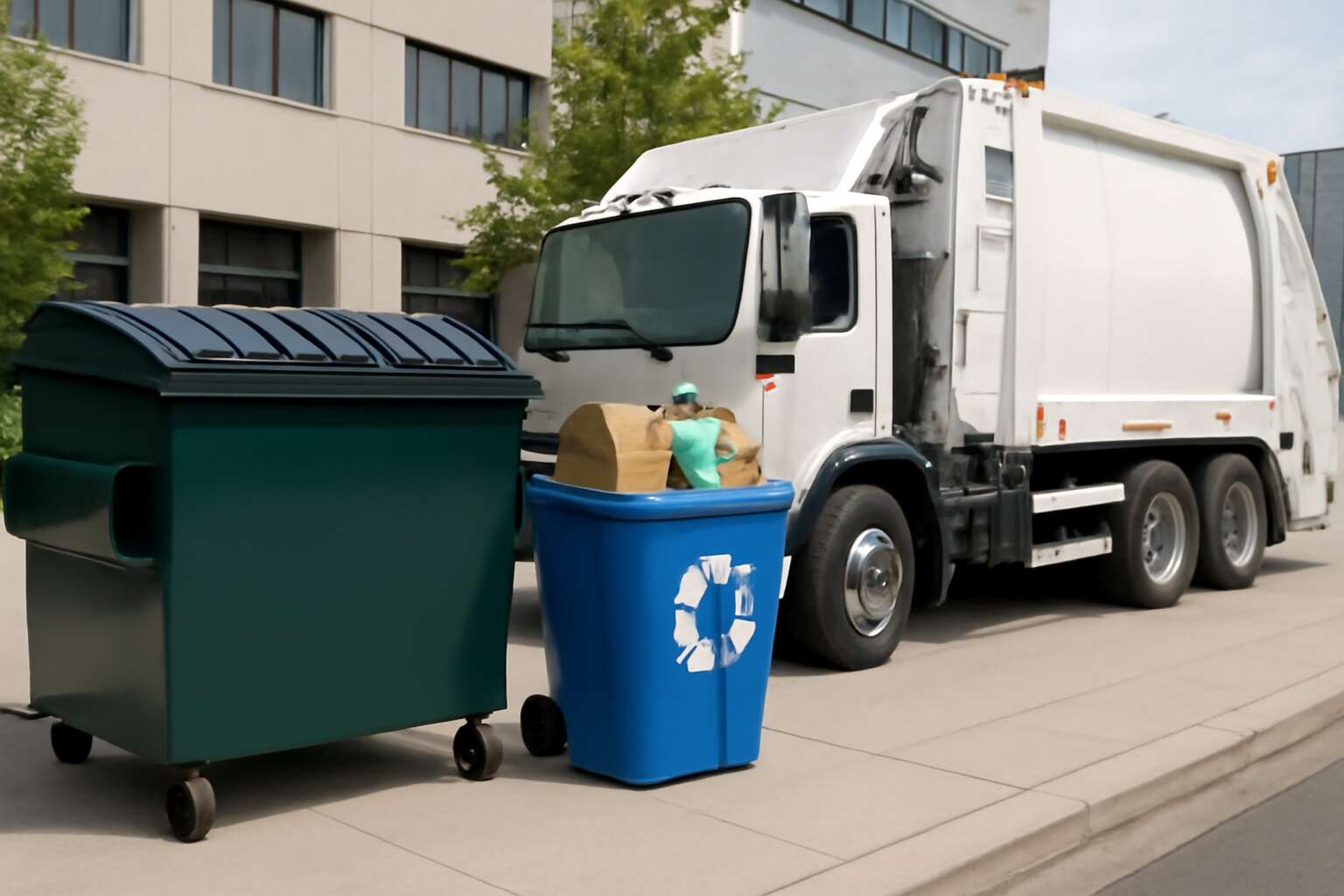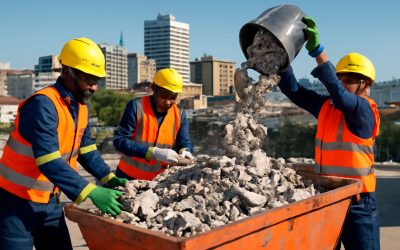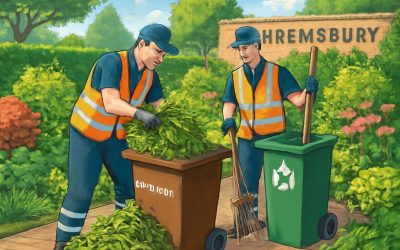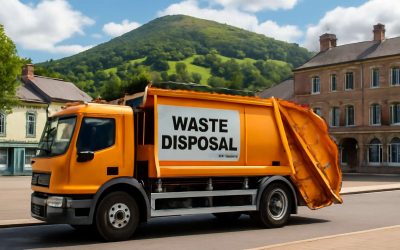Understanding Waste Removal: Essential Options and Considerations
Types of Waste Managed – Residential, Commercial, Industrial, Hazardous
In the shadowed corridors of modern civilization, waste removal options serve as the silent guardians of our environment. With over 2.5 billion tons of waste generated annually worldwide, understanding the different types of waste managed becomes paramount. Each category demands a tailored approach—be it residential, commercial, industrial, or hazardous—each with its own dark intricacies and risks.
Residential waste removal encompasses everyday refuse, from discarded packaging to garden debris, but it’s far from mundane. Commercial waste involves the detritus of bustling enterprises, often requiring swift and efficient disposal solutions to prevent chaos. Industrial waste, heavy with the burden of manufacturing byproducts, calls for specialized handling to ensure safety and sustainability. Hazardous waste, the most sinister of all, demands meticulous care to prevent environmental catastrophe.
Understanding these distinctions is essential when exploring waste removal options, as each type carries unique considerations—safety, legality, and environmental impact—like pieces of a puzzle that must fit together perfectly for the preservation of our world’s fragile balance.
Factors Influencing Waste Disposal Choices – Volume, Material Type, Location, Budget
Waste removal options are not a one-size-fits-all solution; they hinge on a delicate dance of factors that influence what disposal method is best suited for each scenario. With over 2.5 billion tons of waste generated globally each year, understanding these critical considerations becomes essential for sustainable management. Every waste type demands a tailored approach—whether it’s volume, material type, location, or budget—that dictates the most effective and environmentally friendly disposal method.
Volume plays a pivotal role. Small-scale residential waste may be handled with curbside collection, while industrial quantities require heavy-duty skips or specialized hauling. Material type is equally crucial — hazardous waste, for instance, demands stringent safety protocols. Location influences logistics; urban areas might benefit from centralized waste facilities, whereas remote regions often need mobile solutions. Budget constraints further complicate decisions, but choosing the right waste removal options ensures both safety and cost-efficiency, safeguarding communities and ecosystems alike.
Environmental Impact of Different Waste Removal Methods – Recycling, Landfilling, Incineration
In the quest to tame the growing tide of waste, understanding the environmental impact of different waste removal options is paramount. Each method—be it recycling, landfilling, or incineration—carries its own ecological footprint, shaping the health of our planet and communities. Recycling stands out as a beacon of sustainability, transforming discarded materials into new resources and reducing the need for raw extraction. Conversely, landfilling, while often the most straightforward solution, can lead to long-term soil and water contamination if not properly managed.
Incineration, another popular waste removal option, offers a dual benefit of waste volume reduction and energy recovery. However, it releases emissions that must be carefully controlled to mitigate air pollution. The choice among these options hinges on a delicate balance of environmental considerations, local infrastructure, and economic feasibility. When selecting waste removal options, understanding these environmental nuances is essential to foster a greener, more resilient future—especially in regions like South Africa, where sustainable waste management can make a profound difference.
Common Waste Removal Services
Dumpster Rental Services – Types of Dumpsters, Rental Process, Usage Tips
Choosing the right waste removal options can make all the difference in managing debris efficiently. One popular choice is dumpster rental services, which offer a variety of dumpster types tailored to specific needs. Whether you’re clearing out a residential property or managing a large construction site, understanding the different types of dumpsters is essential. From small roll-offs to large industrial containers, each serves a unique purpose and can handle different waste volumes.
The rental process is straightforward but requires careful planning. Typically, it involves selecting the appropriate dumpster size, scheduling delivery and pickup, and understanding usage guidelines. Clear communication with your waste removal provider ensures the process runs smoothly and prevents unexpected costs. Usage tips include avoiding overfilling, securing the lid properly, and placing the dumpster on a stable surface to prevent accidents. When done correctly, these waste removal options streamline debris disposal and keep your site safe and compliant.
Curbside Waste Collection – Weekly Pickups, Recycling Programs, Special Waste Collection
Waste removal options are the unsung heroes of tidy living and efficient business operations—yet many overlook their importance until chaos strikes. In South Africa, curbside waste collection remains a staple, offering weekly pickups that keep neighborhoods squeaky clean without breaking the bank. These services are tailored to handle everything from household rubbish to commercial refuse, making waste management a breeze for busy homeowners and entrepreneurs alike.
Recycling programs form a vital part of modern waste removal options, allowing communities to reduce landfill overflow while giving waste a second chance at life. Many local municipalities now offer dedicated bins for recyclables, encouraging residents to sort their waste at the source. For those with hazardous or special waste, there are designated collection services designed to handle materials safely and in compliance with environmental standards.
- Scheduling convenient pickups
- Ensuring proper waste segregation
- Adhering to disposal regulations
All these services work together to create a comprehensive waste removal system that keeps South Africa cleaner, greener, and more sustainable. When waste management is streamlined through reliable waste removal options, everyone wins — from the environment to the everyday citizen.
Drop-Off Waste Facilities – Recycling Centers, Waste Transfer Stations, Landfills
Beyond the familiar curbside pickups and recycling initiatives, there exists a labyrinth of waste removal options that quietly orchestrate the health of our environment. Drop-off waste facilities such as recycling centers serve as vital hubs where waste transforms from a burden into a resource. These centers are often the first line of defense for communities seeking sustainable solutions, encouraging individuals and businesses to participate actively in waste reduction.
Waste transfer stations act as logistical nodes—aggregating waste from multiple sources before it’s dispatched to landfills or processing plants. Their strategic placement minimizes transportation costs and environmental impact, making them an integral part of comprehensive waste removal options. Meanwhile, landfills, though often misunderstood, are engineered with precision to contain waste safely, preventing contamination and facilitating future reclamation efforts.
- Recycling centers
- Waste transfer stations
- Landfills
In South Africa, these facilities embody the intersection of responsibility and innovation—each playing a distinct role in the ongoing quest for environmental stewardship. The choice of waste removal options hinges on myriad factors, yet their collective purpose remains singular: to forge a cleaner, more sustainable future amid the chaos of human activity.
Specialized Waste Disposal Options
Hazardous Waste Disposal – Types of Hazardous Waste, Safety Regulations, Disposal Procedures
When it comes to waste removal options, hazardous waste disposal stands apart as a critical process demanding meticulous care. The spectrum of hazardous waste includes substances like chemicals, medical waste, and industrial byproducts—each requiring specialized handling to prevent environmental catastrophe. In South Africa, strict safety regulations govern this delicate process, ensuring that every step from collection to final disposal adheres to national and international standards.
Disposal procedures for hazardous waste are designed to mitigate risks, often involving secure containment, transportation by licensed specialists, and ultimate treatment at facilities equipped to neutralize dangerous elements. To navigate this complex landscape, understanding the types of hazardous waste and the safety protocols involved becomes essential. For instance, some waste must be treated through chemical stabilization, while other types are incinerated under controlled conditions. Awareness of these nuances ensures that waste removal options remain safe, compliant, and environmentally responsible.
Construction and Demolition Waste Removal – Bulk Debris Removal, Recycling Cinder and Concrete
In the bustling landscape of South Africa’s construction sites and demolition projects, waste removal options are more than mere logistics—they are the lifeblood of sustainable development. Specialized waste disposal, especially for construction and demolition debris, transforms chaos into order, ensuring safety and environmental harmony. Bulk debris removal, for instance, acts as the clearing storm that makes way for new beginnings, efficiently hauling away discarded timber, metal, and other materials that once seemed unmanageable.
Recycling cinder and concrete, often overlooked as simple rubble, holds the promise of rebirth—these materials can be crushed and repurposed, reducing strain on landfills and conserving resources. By embracing such eco-conscious waste removal options, companies not only meet regulatory standards but also champion a greener future. The art lies in discerning which waste can be recycled, which must be disposed of safely, and how to coordinate these processes seamlessly. When combined, these strategies forge a resilient pathway toward sustainable construction practices in South Africa.
E-Waste Recycling – Electronics Disposal Methods, Recycling Centers, Data Security
In a world where electronic devices multiply faster than the blink of an eye, managing e-waste has become a pivotal element of sustainable waste removal options. South Africa’s rapidly expanding tech landscape demands responsible electronics disposal methods that safeguard both the environment and data security. E-waste recycling isn’t just about decluttering; it’s a vital process that transforms obsolete gadgets into valuable resources, preventing hazardous materials from seeping into our soil and water.
Recycling centers dedicated to electronics are the heart of this eco-conscious movement. They meticulously dismantle devices, extracting precious metals and components for reuse, thus reducing the burden on landfills. Yet, amidst this transformation lies a crucial concern—data security. Sensitive information stored in discarded devices must be obliterated beyond recovery, making data destruction an integral part of responsible e-waste disposal.
For businesses and individuals alike, understanding the nuances of electronics disposal methods can turn a mundane task into a powerful act of environmental stewardship. The right waste removal options ensure that each piece of obsolete tech finds its rightful place—either reborn through recycling or safely disposed of—without jeopardizing our planet’s fragile ecosystems.
Innovative and Sustainable Waste Management Solutions
Composting and Organic Waste Management – Benefits, Composting Methods, Local Programs
Amid the labyrinth of waste removal options, innovative and sustainable solutions shine as beacons of hope for our planet’s future. Composting and organic waste management are transforming the way communities handle their refuse, turning what was once seen as mere trash into valuable resources. In South Africa, these methods are gaining momentum, fostering a greener, more resilient environment. The benefits are manifold, from reducing landfill overflow to enriching soil health and supporting local agriculture.
Composting methods vary from simple backyard heaps to advanced aerated windrow systems, each tailored to fit community needs and scale. Local programs often encourage residents to participate in organic waste management through curbside compost collection or community composting sites. These initiatives not only divert waste from landfills but also promote environmental stewardship and sustainable living. By embracing such innovative waste management solutions, communities can significantly cut down on greenhouse gas emissions and foster a circular economy where waste becomes a resource rather than a burden.
Waste-to-Energy Technologies – Incineration with Energy Recovery, Benefits and Challenges
Amid the growing urgency to address mounting waste removal options, waste-to-energy technologies emerge as a compelling fusion of innovation and sustainability. Incineration with energy recovery transforms what was once a solely dispositional process into a dual-purpose operation—eliminating waste while harnessing thermal energy to generate electricity or heat. This method offers a tantalizing glimpse into a future where waste is not merely discarded but repurposed into vital resources, reducing our reliance on landfills and fossil fuels.
Yet, this approach is not without its complexities. The environmental benefits are significant—reducing landfill overflow, curbing greenhouse gas emissions, and producing renewable energy. However, challenges persist, such as emissions management, high operational costs, and public perception concerns. To navigate these intricacies, some regions adopt phased strategies, prioritising cleaner technologies and rigorous regulatory standards. This ensures that waste-to-energy remains a sustainable facet of diverse waste removal options, balancing ecological impact with economic viability.
Community-Based Recycling Initiatives – Educational Programs, Local Drop-Off Points
In the shadowed corridors of modern waste management, community-driven initiatives shine as a beacon of hope—an antidote to the overwhelming tide of refuse that threatens our landscapes. Innovative and sustainable waste management solutions, such as community-based recycling initiatives, breathe new life into a world drowning in discarded debris. These programs often hinge on educational efforts that illuminate the importance of mindful waste disposal, transforming ordinary citizens into stewards of their environment.
Local drop-off points serve as sanctuaries for recyclables, where the curious and committed alike can deposit materials for a second chance at life. This decentralized approach reduces reliance on sprawling landfills and cultivates a collective consciousness about waste removal options. Some regions even harness the power of educational programs to instill habits of reuse and reduction, fostering a culture where waste is viewed not as refuse but as resource.
To further galvanize community participation, many initiatives incorporate:
- Interactive workshops on composting and organic waste management
- Volunteer-led cleanup campaigns
- Partnerships with local schools and businesses to promote recycling
Such endeavors weave a tapestry of sustainability, demonstrating that even in the darkest corners of waste management, innovation can flourish when communities unite under a shared purpose. In the end, these community-based recycling initiatives stand as testament to the power of local action in shaping a cleaner, greener future amidst the labyrinth of waste removal options.
Choosing the Right Waste Removal Option
Assessing Your Waste Disposal Needs – Waste Volume, Waste Type, Frequency
Assessing your waste disposal needs is a crucial step in selecting the most suitable waste removal options. Understanding the volume of waste generated, the type of materials involved, and the frequency of disposal allows for a tailored approach that maximizes efficiency and minimizes environmental impact.
For instance, a bustling construction site in Johannesburg will require different waste removal options compared to a small retail shop in Cape Town. The key factors to consider include waste volume—are you dealing with a pile that needs quick clearance or ongoing, smaller pickups? The waste type also influences your choice; hazardous waste demands specialized disposal methods, while organic waste can often be composted.
A simple way to clarify your needs? Think through these elements:
- Waste volume
- Waste type
- Disposal frequency
Evaluating these aspects ensures you select the ideal waste removal options—be it dumpster rental services, curbside waste collection, or drop-off waste facilities—saving both time and money while supporting sustainable practices.
Cost Considerations – Pricing, Long-term Expenses, Budgeting Tips
In a landscape where waste management complexity mirrors the intricacies of human psychology, choosing the right waste removal options becomes an act of deliberate intentionality. Cost considerations often serve as the fulcrum upon which decisions balance—yet beneath the surface lies an intricate web of long-term expenses that can quietly erode budgets if overlooked. For businesses and homeowners alike, understanding the nuanced distinctions between upfront pricing and ongoing costs reveals the true value of each waste removal option.
Pricing structures can vary dramatically—some services charge by volume, others by weight or frequency. It’s not merely about finding the cheapest option but rather the one that aligns with your unique waste disposal needs. A construction site, for example, may benefit from bulk dumpster rental services that offer cost efficiency for large debris, while a retail store might find curbside waste collection more economically viable for smaller, regular pickups.
Budgeting tips require a deep dive into the total cost of ownership—considering factors such as seasonal fluctuations, regulatory fees, and environmental levies. By evaluating these elements with clarity and foresight, you can navigate the labyrinth of waste removal options with confidence, ensuring both fiscal responsibility and environmental stewardship are upheld. Remember, the goal is harmony—cost-effective waste management that sustains your enterprise and the planet alike!
Regulatory Compliance – Permits, Local Regulations, Safety Guidelines
Choosing the right waste removal options isn’t merely a matter of convenience—it’s an act of strategic foresight that aligns with regulatory compliance and safety. In South Africa, strict permits and local regulations govern waste disposal, ensuring that environmental integrity remains intact. Overlooking these legal frameworks can lead to hefty fines and operational delays, making compliance a cornerstone of responsible waste management.
Understanding the nuances of permits and safety guidelines transforms waste removal from a mundane task into a deliberate act of environmental stewardship. For instance, hazardous waste disposal requires adherence to specific procedures, including specialized containers and disposal sites. Ensuring that your chosen waste removal options conform to these standards not only protects your business but also preserves community health and environmental harmony.
- Research local regulations specific to your municipality
- Secure necessary permits before initiating waste removal processes
- Implement safety protocols during waste handling and transportation
By weaving compliance into your waste management strategy, you foster trust with regulators and demonstrate a commitment to sustainable practices—an essential component of modern waste removal options in South Africa’s evolving landscape. Remember, regulatory adherence is the invisible thread that binds efficient, safe, and lawful waste disposal together, ensuring your operations remain smooth and environmentally sound.
Tips for Effective Waste Management
Reducing Waste Generation – Practical Strategies, Consumer Awareness
In the bustling tapestry of daily life, waste seems to multiply like whispers in the wind, yet conscious choices can transform chaos into clarity. Embracing effective waste management begins with reducing waste generation—an act of mindful consumption and strategic planning. When we opt for reusable items, repair rather than replace, and select products with minimal packaging, we actively diminish the volume of waste destined for landfills. This proactive approach not only lightens the burden on waste removal options but also nurtures a healthier environment.
Consumer awareness plays a pivotal role in this delicate dance with waste. By educating ourselves on proper disposal methods and supporting local recycling initiatives, we become stewards of sustainability. Incorporating composting techniques for organic waste transforms refuse into fertile soil, closing the loop in waste management. Remember, every small step taken towards reducing waste generation amplifies the impact—making waste removal options more efficient and eco-friendly.
Sorting Waste for Recycling – Proper Segregation, Labeling, Local Recycling Rules
Effective waste management begins with the art of sorting waste for recycling. Proper segregation is key to ensuring that recyclables—such as plastics, paper, and metals—are not contaminated, which can render entire batches useless. Clear labeling on bins helps households and businesses distinguish between general waste and recyclables, streamlining waste removal options and minimizing landfill overflow.
Understanding local recycling rules is equally important. Regulations vary across regions in South Africa, with some municipalities emphasizing curbside collection, while others operate drop-off facilities. Familiarizing oneself with these policies guarantees compliance and enhances the efficiency of waste removal options.
To facilitate seamless sorting, consider adopting a simple, color-coded system for waste bins. This can significantly improve participation and reduce the clutter of mixed waste, making recycling efforts more successful. Engaging with community recycling initiatives also broadens the impact, fostering a collective shift towards sustainable waste removal options.
Scheduling and Planning Waste Pickup – Timing, Coordination, Regular Maintenance
Effective waste management hinges on smart scheduling and careful planning of waste pickup. Timing is crucial; coordinating pickups during off-peak hours can prevent overflow and reduce environmental impact. Regular maintenance of waste collection points ensures that bins remain accessible and hygienic, avoiding blockages that can disrupt waste removal options. Implementing a structured timetable and sticking to it minimizes chaos and keeps waste under control.
To streamline the process, consider using a simple calendar or digital reminder system to keep track of pickup days. For larger operations, an ordered schedule aligning with waste volume and type can optimize resource use. Involving local waste removal services to establish consistent routines ensures that waste collection remains predictable, saving time and money. Remember, a well-organized waste removal plan isn’t just about convenience—it’s about fostering a cleaner, safer environment for everyone.




0 Comments